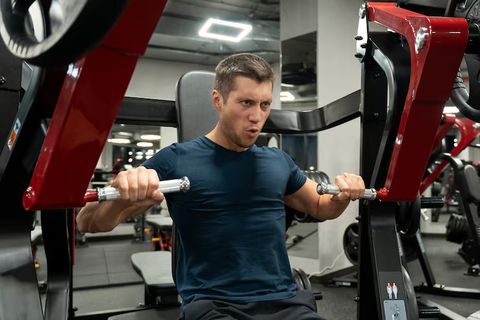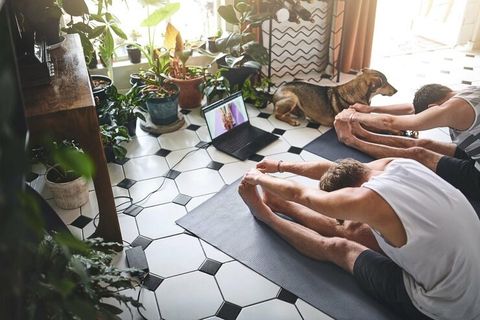Discover the Details: Information on Different Yoga Styles and Benefits
Yoga is an ancient practice that combines physical movement, breath control, and mindfulness. Originating in India thousands of years ago, it was initially developed as a spiritual discipline aimed at harmonizing the body, mind, and spirit. Today, yoga has spread globally and evolved into various styles, each with its own focus and benefits.
The different approaches to yoga—ranging from physically intense practices to meditative and restorative forms—exist to meet diverse needs. Some styles emphasize flexibility and strength, while others prioritize stress relief, mental clarity, or spiritual awareness. This variety makes yoga accessible to people of different ages, fitness levels, and personal goals.

Importance
Yoga matters today more than ever due to its role in addressing modern health and lifestyle challenges. With increasing stress levels, sedentary work habits, and rising concerns about mental health, yoga offers practical solutions that appeal to a broad audience.
-
For physical health: It supports strength, flexibility, balance, and posture.
-
For mental well-being: Practices such as mindfulness meditation and breathing techniques reduce anxiety, improve focus, and promote relaxation.
-
For diverse populations: From athletes seeking recovery to older adults improving mobility, yoga can be adapted to suit different needs.
-
For communities: Yoga is often used in schools, workplaces, and healthcare programs to improve overall well-being.
Table: Common Problems and How Yoga Helps
| Problem | Yoga Benefit |
|---|---|
| Stress & Anxiety | Calming breathwork, meditation |
| Back & Posture Issues | Strengthening and stretching poses |
| Lack of Physical Activity | Gentle or vigorous movement options |
| Sleep Problems | Restorative yoga for relaxation |
| Low Energy & Fatigue | Dynamic flows like Vinyasa or Ashtanga |
Recent Updates
Over the past year (2024–2025), yoga has seen several notable developments:
-
Digital Growth: Online yoga classes continued to expand in 2024, with more interactive platforms offering live sessions and personalized guidance.
-
Hybrid Classes: Many studios now combine in-person and virtual options to accommodate flexible lifestyles.
-
Medical Integration: In 2024, several healthcare providers began including yoga therapy as part of holistic treatment for chronic pain, stress disorders, and post-recovery care.
-
Trends in Practice: According to a 2024 wellness survey, restorative yoga and yoga nidra (yogic sleep meditation) gained popularity due to their stress-relieving properties.
-
Inclusivity & Accessibility: More adaptive yoga programs for seniors, people with disabilities, and beginners became available in 2025.
-
Sustainability: Yoga communities have shifted toward eco-friendly mats and gear, reflecting broader environmental concerns.
Laws or Policies
While yoga is a practice rather than a regulated medical treatment, several policies and programs influence its promotion and accessibility:
| Region | Policy/Program | Impact |
|---|---|---|
| India | Ministry of AYUSH, International Yoga Day | Promotes yoga globally through education and events. |
| United States | National Center for Complementary and Integrative Health (NCCIH) | Provides research funding and resources on yoga’s health benefits. |
| European Union | Public Health Programs | Includes yoga in wellness initiatives and workplace health programs. |
| Canada | Healthcare Wellness Grants | Supports mental health and physical activity programs, including yoga. |
| Australia | Government Health Promotion Initiatives | Encourages yoga in schools and workplaces for overall well-being. |
These initiatives reflect a recognition of yoga’s role in preventive healthcare and community wellness.
Tools and Resources
A variety of digital and offline resources make yoga more accessible to individuals worldwide.
-
Apps & Online Platforms
-
Down Dog: Customizable yoga practices for all levels.
-
Glo: Offers on-demand yoga, meditation, and pilates classes.
-
Yoga with Adriene (YouTube): Free instructional videos with global reach.
-
-
Trackers & Calculators
-
Yoga Journal Pose Finder: Helps practitioners learn proper postures.
-
Fitness trackers: Devices like Fitbit and Apple Watch track heart rate and progress during sessions.
-
-
Websites & Educational Tools
-
International Day of Yoga portal: Provides global event details and resources.
-
Yoga Alliance: Offers standards for certified yoga instructors and schools.
-
National Health Service (NHS) – UK: Provides simple beginner-friendly guides.
-
-
Offline Resources
-
Community yoga centers.
-
Local workshops focusing on mindfulness, breathing, or therapeutic yoga.
-
Table: Helpful Resources for Yoga Learners
| Type | Resource | Purpose |
|---|---|---|
| Apps | Down Dog, Glo | Guided sessions at home |
| Videos | Yoga with Adriene | Free beginner-friendly practice |
| Tracking Tools | Fitness wearables | Monitor progress |
| Education | Yoga Alliance, Yoga Journal | Pose library, instructor info |
| Events | International Yoga Day website | Access to global celebrations |
FAQs
Q1. What are the main styles of yoga and how do they differ?
-
Hatha: Gentle, foundational style focusing on posture and breath.
-
Vinyasa: Flow-based, linking breath with movement.
-
Ashtanga: Structured, athletic, and physically demanding.
-
Bikram/Hot Yoga: Performed in heated rooms with a set sequence of poses.
-
Kundalini: Combines breath, chanting, and movement for energy flow.
-
Yin: Slow-paced, long-held poses for deep relaxation.
-
Restorative: Uses props for gentle stretching and recovery.
Q2. Can yoga replace exercise at the gym?
Yoga can improve strength, flexibility, and endurance, but it may not fully replace cardiovascular training or high-intensity workouts. Many people combine yoga with other forms of exercise.
Q3. How often should beginners practice yoga?
Beginners may benefit from practicing 2–3 times per week. Consistency is more important than duration, and even 20–30 minutes per session can provide benefits.
Q4. Is yoga safe for seniors or people with health conditions?
Yes, with adaptations. Gentle styles like Hatha, Yin, and Restorative yoga are often recommended. Consulting a healthcare provider before starting is advisable.
Q5. Do I need special equipment to practice yoga?
A yoga mat is usually enough. Optional props like blocks, straps, and bolsters can improve comfort and alignment, especially for beginners.
Conclusion
Yoga continues to evolve as a global practice that supports both physical and mental health. From ancient roots in India to modern adaptations around the world, it has adapted to diverse lifestyles and needs.
The wide range of styles—whether dynamic Vinyasa, meditative Yin, or therapeutic Restorative—ensures that there is a form of yoga suitable for everyone. Recent trends show increased digital access, medical integration, and inclusive programs, while policies and awareness campaigns further highlight its benefits.
With the help of tools like apps, educational platforms, and global events, yoga is more accessible than ever. For individuals seeking balance, improved health, or simply a moment of calm in their day, understanding different yoga styles and their benefits provides a meaningful first step.






